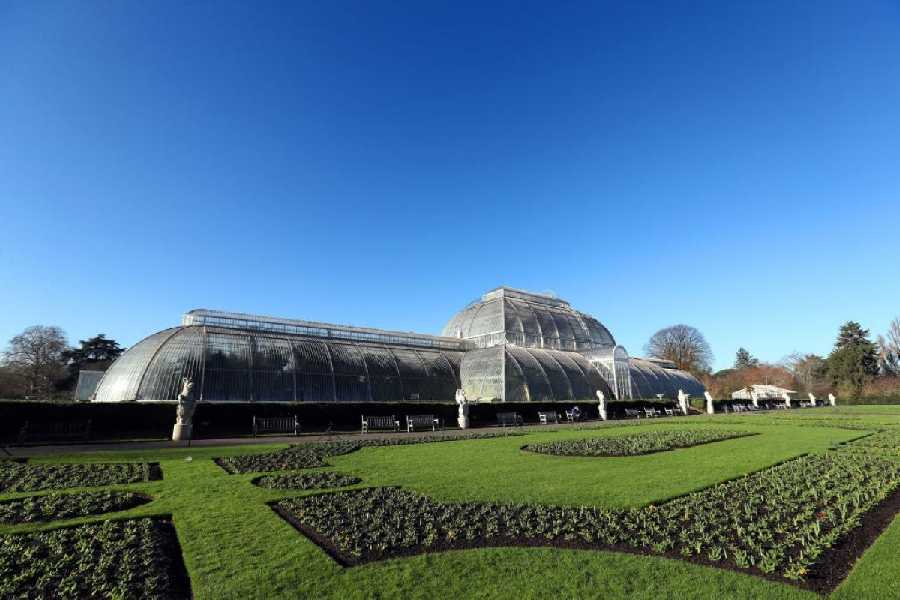For generations, plant-lovers have come to the glass Palm House at Kew Gardens in London to climb a spiral staircase, stroll along a walkway and peer down on the green scalp of the jungle below.
But in recent years, the structure has started to show its 177 years. Paint is blistering off the rusting iron, and heat from a gas boiler escapes from around its 16,000 panes of glass.
“It’s starting to degrade,” said Reuben Briggs, who is in charge of capital projects for Royal Botanic Gardens, Kew, as the gardens are formally known. He noted the tropical climate that the greenhouse simulates places strain on the building. “It’s dripping with condensation, and that cast and wrought iron is starting to corrode,” he said.
So in 2027, Kew announced on Wednesday, the Palm House will close for four years for a major renovation, along with the Waterlily House, its 19th-century neighbour. The goal of the construction project is to address “serious signs of deterioration”, the announcement said, and also to help Kew Gardens meet its climate goals.
“The key thing for us is to conserve the building, but also improve it for the future,” Briggs said. “So improve it for the plants, improve it for the visitors, but also make sure that it’s able to cope with the changing climate as well.”
Kew Gardens, which is a major tourist attraction and a hub for botanical research, hopes to be “climate positive” by 2030. To do so, it will need to store more carbon than it releases.
While its thousands of plants absorb carbon dioxide, the two hulking, Victorian-era glasshouses being renovated are not energy efficient.
They opened in 1848 and 1852, during Britain’s rapid industrialisation, when humans started burning fossil fuels on a mass scale and warming the planet. Today, the heat from a gas boiler, which dates from the 1980s, leaks from the Palm House through the old windows.
So the buildings will need to be gutted.
Each of 16,000 panes of glass in the Palm House, which is kept at a minimum of 18°C and 75 per cent humidity, needs to be replaced with windows that have thicker glazing, Briggs said. They will need to be sealed better. The iron in both structures must be blasted and tested, and some places may need to be strengthened before it can be repainted.
“It’s not in danger of imminent collapse, or anything like that,” Briggs said. “But we need to make sure we’re tackling it now.”
The gas-powered heating system will also be replaced with electric air pumps, Briggs added, while the electrical system and watering system will also be replaced. He said that work is projected to reduce the amount of energy that is needed to heat the building by at least 60 per cent.
Kew Gardens plans to start construction in 2027 and finish in 2031, and has raised about a third of the $80.4 million that it needs to complete the renovation.
The Palm House has had to adapt before. Its original glass panels were green, which the original curator believed would give the plants more shade.
Later, Kew’s experts decided this was a mistake. The dark glass blocked too much light, and in the 1890s, industrial pollution dirtied the glass even further. The green glass was replaced with clear panes, so the palms could grow in a changing world. Moving the plants will be its own challenge.
The Waterlily House is emptied and cleaned every winter, so moving the aquatic plants from their inky ponds will be fairly routine.
But most of its 1,300 plants in the Palm House are either endangered or extinct in the wild.
The horticulturists have already started to prep.
Some of the plants can be easily taken to a temporary glasshouse or moved to other parts of the gardens. Others are trickier. Kew has what is believed to be the world’s oldest potted plant: an Eastern Cape giant cycad from South Africa (Encephalartos altensteinii), which was brought to Kew on a ship in 1775, which Briggs said was “in a big wooden tub”. It weighs more than a tonne.
“They are very worried about moving that one,” he said. “Just logistically: How do they lift it without damaging it?”
Other plants are just too big to move, so they are being propagated in a separate greenhouse and replaced, a standard part of the gardens’ maintenance even outside of renovation.
This is an especially high-stakes operation for threatened plants, like the Ravenea moorei, which was thought to be extinct in the wild until 2023, when a Kew researcher found 12 specimens in the Comoro Islands and brought some samples back.
Briggs said he did not know if the plant, which stands at over 35 feet tall, would survive a move. “It’s the biggest one in there,” he said. “If we had to, if we hadn’t found it in the wild, we’d have had to find a way to do it.”
New York Times News Service











